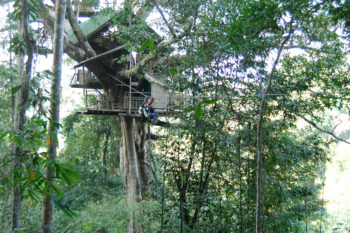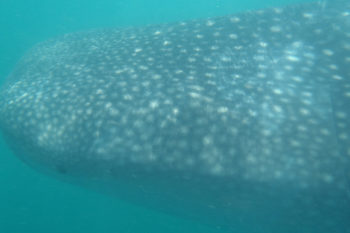When five-month old Kobe arrived at the Tat Kuang Si Bear Rescue Centre, he was traumatised. His mother had been shot and killed by hunters. Kobe had been caught, noosed, bound tightly by all four legs, tied to a length of bamboo and carried through the jungle. He endured being carried around this way for three days as Forest Rangers pursued the hunters. Eventually he was abandoned and found by the Rangers, then saved by Free the Bears.
“For three months he hid in a log and only came out when he was forced to, to check on his condition,” says Michael Brocklehurst, Free the Bears’ Laos programme manager. “He would scream and hit the bars of his enclosure. It was believed that he had been horrifically scarred by the incident.”
If Kobe hadn’t been rescued, he would have likely ended up in a bear bile farm outside of Laos, sentenced to a lifetime of pain and suffering. In Asia, especially in China and Vietnam, bear bile is used in traditional medicine and bear paw whisky and soup are seen as a status symbol. The methods used to harvest the bile are extremely cruel: they are held in coffin-like cages, completely unable to move, with catheters crudely stuck into their gall bladder so the bile can be regularly extracted. Kobe and the 24 other Asiatic black bears (also known as moon bears) that now call the sanctuary home have been lucky to escape this fate.
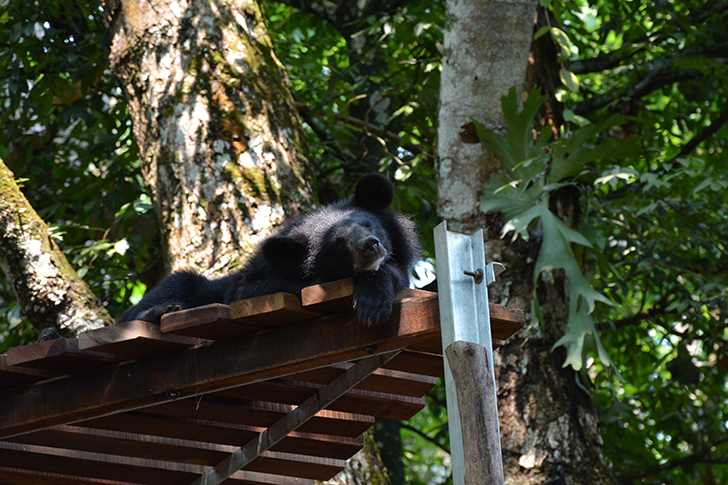
The wild moon bear population in Laos is declining, mainly caused by illegal hunting but also through human confrontation, deforestation, loss of habitat and even entertainment, when businesses keep them as an attraction. Though hunting protected species like bears is illegal in Laos, in a recent snare removal project that Free the Bears conducted in the Nam Kan National Protected Area of Bokeo (the same forest where Kobe came from), in a three-month period they removed more than 1,000 snares.
The Lao rescue centre is located inside Kuang Si Waterfall Park, one of Luang Prabang’s top tourist draws. Visitors can observe the bears enjoying their enclosure in the forest and learn their stories. From viewing platforms you’ll see Vieng happily playing with Xai, elegant Kham skilfully plucking food hidden by the keepers around the enclosure, the females flirtatiously teasing pudgy Morris and maybe you’ll even spot Champa, the first bear to ever undergo brain surgery.
And yes, you’ll see Kobe.
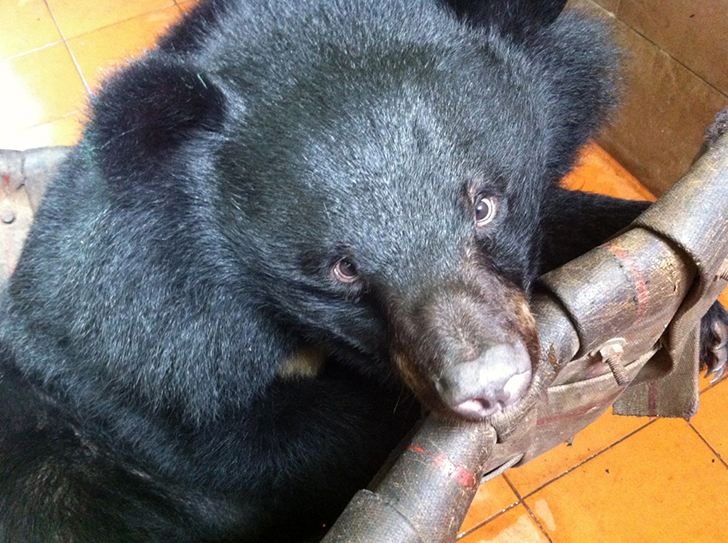
After months of being too terrified to leave the log he was introduced to Moonie, another bear about the same age, her paw missing from a snare. She was confident and quickly established herself as the boss; they became inseparable. Now Kobe is healthy, happy and adapted.
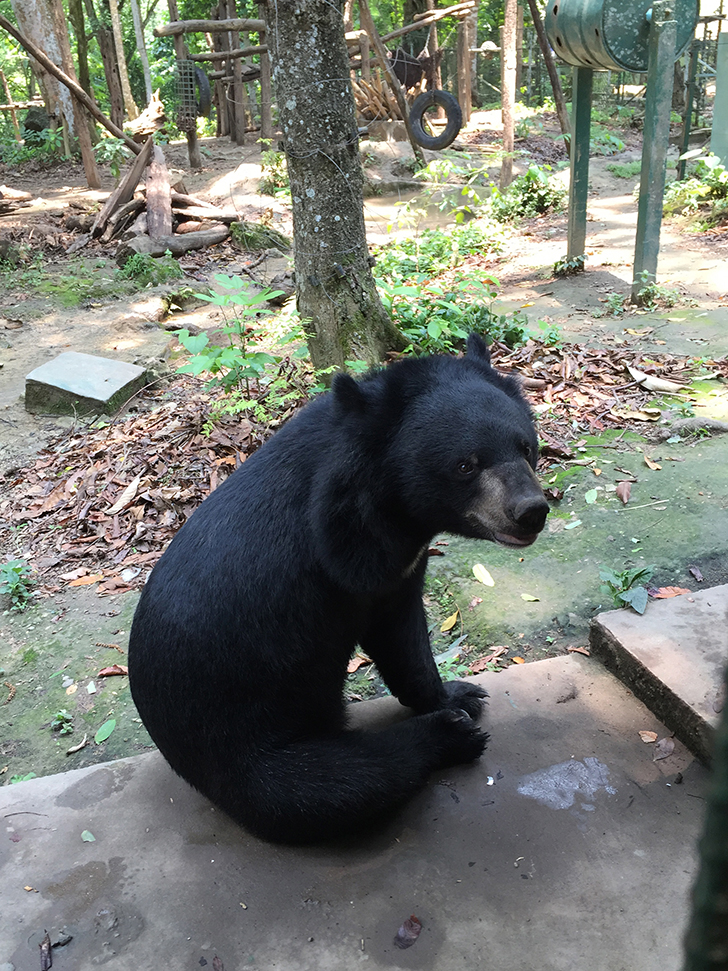
But sadly they can never be returned to the wild. The real solution is to end poaching and the trade of wildlife which is why Free the Bears Laos projects include increasing awareness, supporting the government with confiscations and increasing knowledge through various research projects including assisting one Lao biologist in their Masters of Science.
Entrance to the centre is included with the waterfall park admission but the sanctuary does not receive any amount from this fee. Free the Bears relies solely on partners, corporate sponsors and donations from the public. So here’s how you can help:
- visit the centre and buy an awesome “Free the Bears” T-shirt or other locally made merchandise such as teddy bears, T-shirts, holiday cards and more), and drop some kip into their secure donation box;
- sponsor a virtual gift (buy the bears a hammock – we did!);
- donate via PayPal
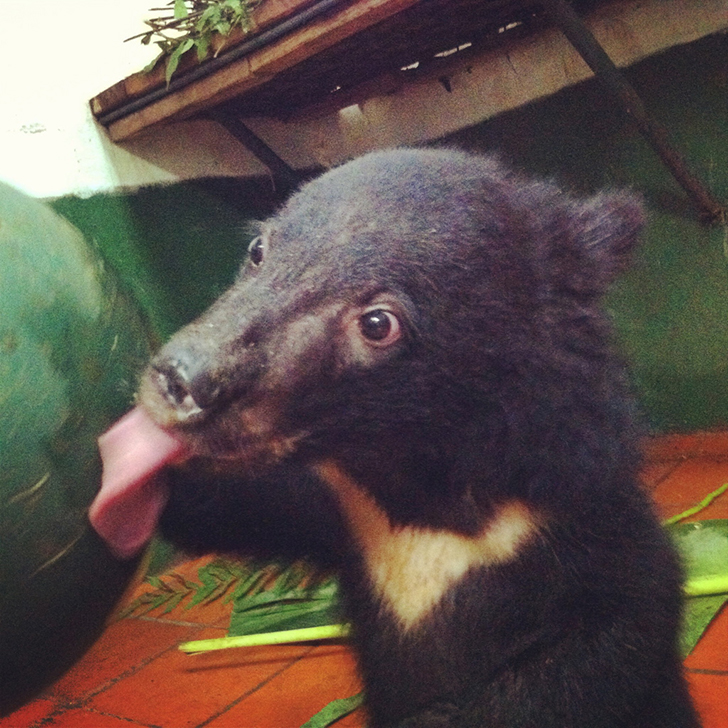
Free the Bears Laos
Tat Kuang Si Bear Rescue Centre
Kuang Si Waterfall, Luang Prabang, Laos
29 km or 45-minute tuk-tuk ride from town
Opens at 08:30, bears are brought off display around 16:30
FreetheBears.org
Free the Bears was founded in 1995 by Australian activist Mary Hutton. In 1997 the organisation first established the Cambodian Bear Sanctuary at the Phnom Tamao Wildlife Rescue Centre, the world’s largest sanctuary for Sun bears. Currently they have sanctuaries across Asia including in Vietnam, India and Laos.
Each month a Travelfish.org writer selects a charity or non-government organisation that they believe does excellent work on their patch in Southeast Asia. They write about them and Travelfish donates $100, a small way to give something back to the region. If you’re looking to give back too, please consider giving a little cash as well.
This article was originally written for and published on Travelfish. Read my story in The Australian on the fight to bring wild tigers back from the brink in Laos.
